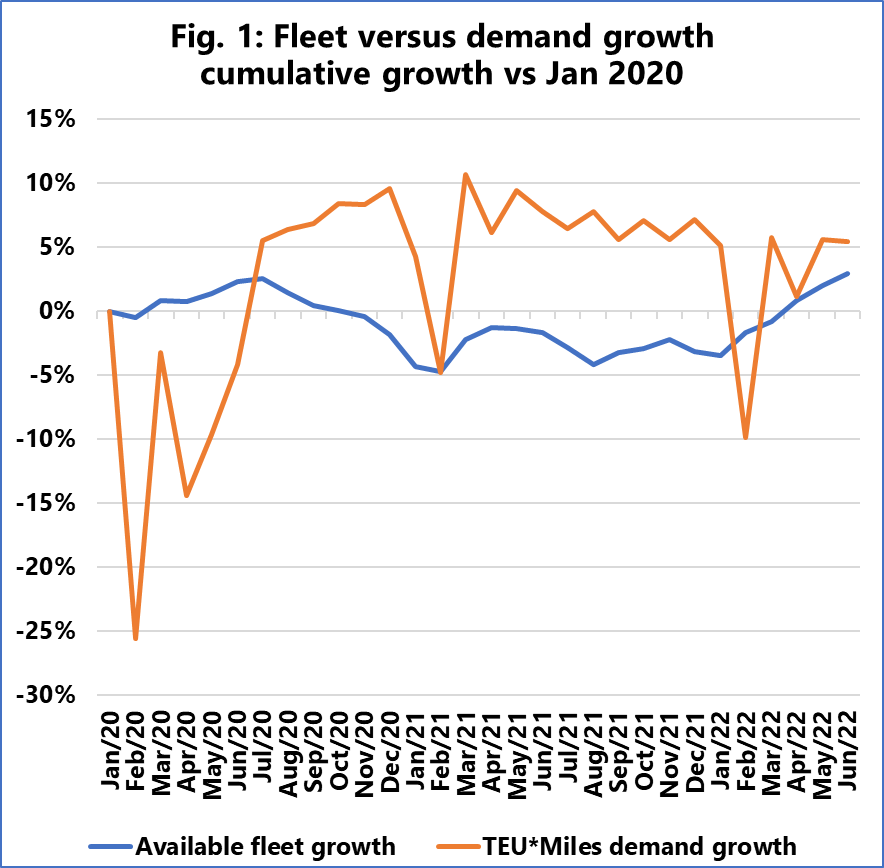The latest findings from maritime data analytics firm Sea-Intelligence have found that demand for containers in the container shipping market is gradually aligning with the capacity of the global fleet.
Sea-Intelligence CEO Alan Murphy delves into what the reduced market capacity due to vessel delays means for the effective growth of global fleet capacity and its impact on the global supply and demand balance.
Murphy said that while the nominal fleet capacity has grown steadily at a rate of about 4% per year from 2020 to 2022, as delays began to worsen, the fleet's actual available capacity dropped significantly, reaching a low point in February 2021, with nominal capacity There is considerable variance from the actual available capacity.

The data graph above shows the growth in available fleet capacity and demand growth in TEU*Miles compared to January 2020. The huge spike in demand in February 2021 and 2022 is a Chinese New Year effect and does not imply any potential changes.
Murphy said it was clear that the "extreme advantage" in favour of shipping companies in 2021 was driven by cumulative demand growth that continued to outpace available fleet capacity. The impact started in July 2020, and the imbalanced supply and demand relationship has only begun to taper off in recent months.
It is understood that the surge in demand driven by the epidemic has pushed the shipping company's operating profit to a staggering $43.9 billion in the first quarter of 2022.
In fact, from November 2020 to January 2022, demand consistently exceeded capacity by 10%. But the gap has been narrowing and is now down to 2% compared to pre-pandemic levels.
“All in all, the data shows that the extreme surge in freight rates in 2021 is indeed driven by a sudden surge in global demand over fleet capacity, mainly due to capacity unavailability,” Murphy said.
“The recent trend of normalization has in turn been driven primarily by gradual improvements in schedule reliability and vessel delays. As long as the improvement continues, we expect the supply-demand balance to continue to decline as well, with increasing downward pressure on freight rates.”
Previous:Spot freight prices continue to fall! West American freight rates will fall below $5,000
Next:Freight down! Demand is softening! The liner company begins operations...